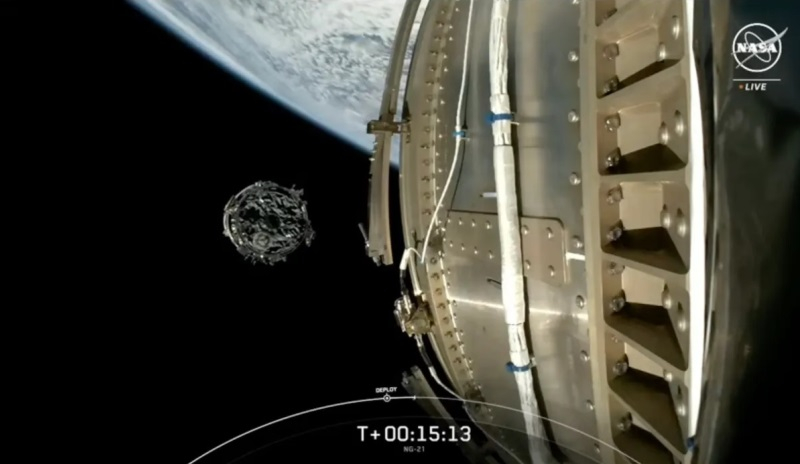Yesterday, the US National Aeronautics and Space Administration (NASA) launched the Northrop Grumman Cygnus cargo spacecraft to the International Space Station. However, soon after delivery into outer space, the ship encountered difficulties, due to which it was unable to complete the planned maneuver to transfer to the intended orbit.

Image source: NASA TV
A SpaceX Falcon 9 launch vehicle was used to launch Cygnus into low Earth orbit. The rocket and the spacecraft were launched from the site at the US Space Force base at Cape Canaveral in Florida on August 4 at 11:02 local time (18:02 Moscow time). Approximately 15 minutes after launch, the ship separated from the upper stage and continued to move independently in the given direction.
After Cygnus separated from its upper stage, NASA and Northrop Grumman did not update information regarding the flight’s progress for several hours. However, negotiations between the astronauts on the ISS and Mission Control indicated that Cygnus, for some reason, did not complete the planned maneuver to raise its orbit, which would allow it to reach the ISS on August 6.
Six hours later, NASA confirmed that Cygnus did not perform the maneuver to change its orbit “due to a late entry into the activation sequence.” This means that due to the glitch, the ship was unable to turn on its own engine to adjust its trajectory. After 50 minutes, a second attempt was made to start the engine, but it also failed due to “low initial pressure” in the power plant.
«Cygnus is at a safe altitude and Northrop Grumman engineers are developing a new launch plan and trajectory change,” NASA said in a statement. They also noted that the deployment of solar panels took place as usual approximately three hours after launch, and Cygnus’s rendezvous with the ISS should occur on August 6 at 03:10 US East Coast time (10:10 Moscow time).
Cygnus carries 3,857 kg of cargo, including 1,560 kg of instrumentation, 1,220 kg of scientific research materials and 1,021 kg of crew supplies. The equipment includes “critical spare parts and new equipment,” a NASA spokesman said. Cygnus must also deliver materials for a study of the effects of space on the DNA of microorganisms and an experiment to study stem cells that could later be used to treat blood diseases.